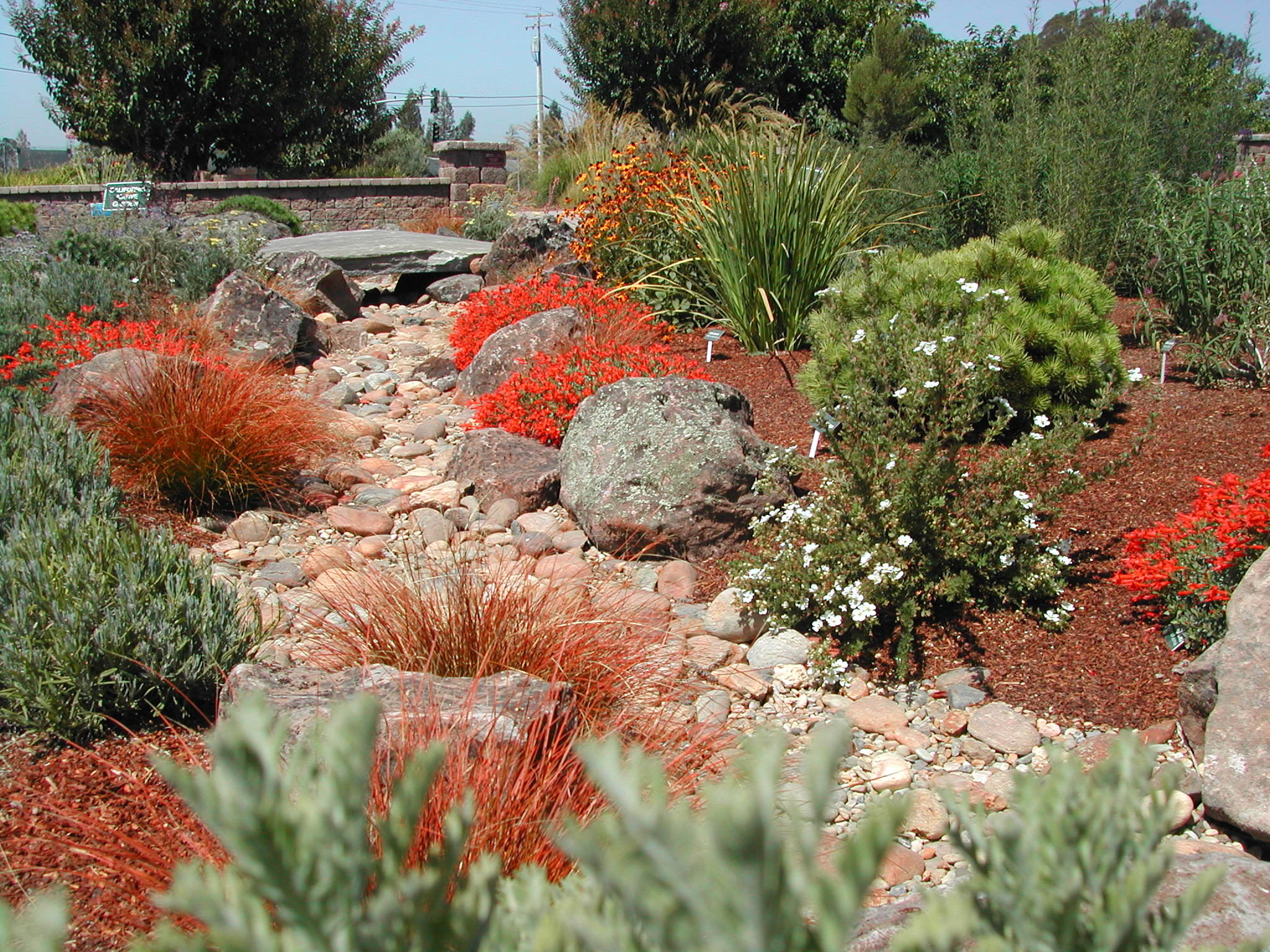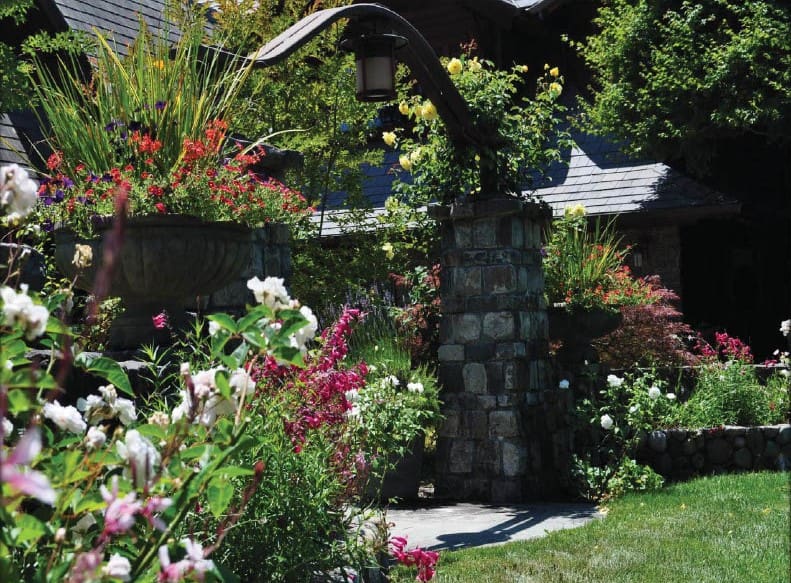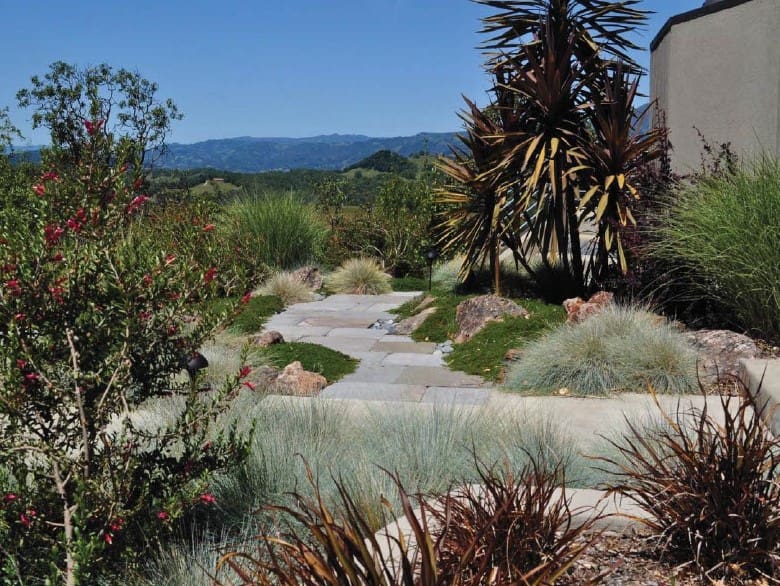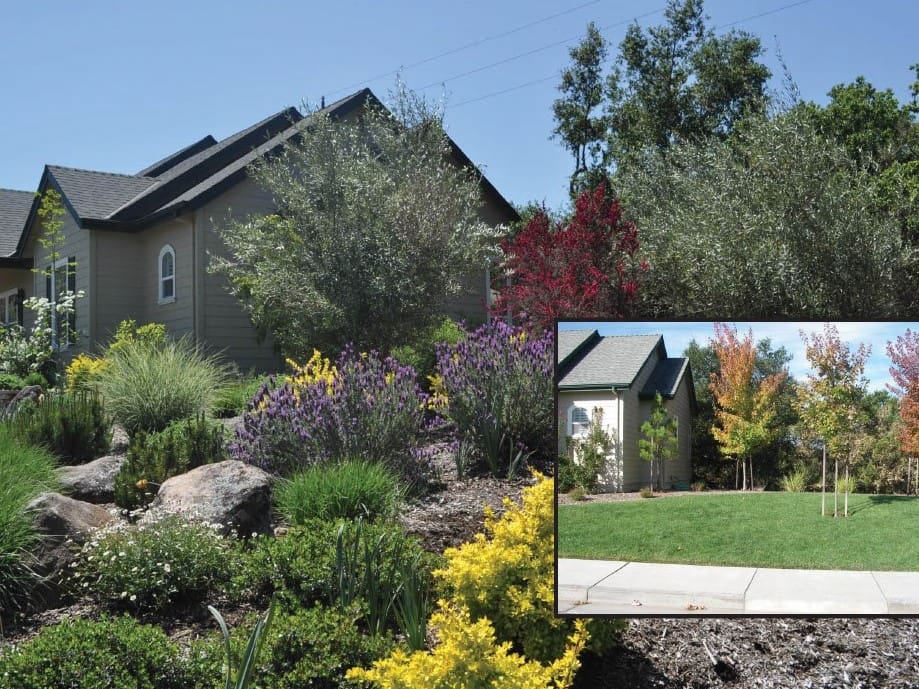
Water efficiency in the landscape should be a critical consideration when designing, installing and maintaining your client’s property.
According to the U.S. Drought Monitor, during the week of Aug. 23, 2022, 46.91 percent of the United States is experiencing moderate to exceptional drought conditions.
Meanwhile, 99.76 percent of California is experiencing moderate to exceptional drought conditions currently. 2022 also marks the driest year on record for the state. Earlier this year, the State Water Resources Control Board voted unanimously to implement a statewide ban on the watering of nonfunctional turf in the commercial, industrial and institutional sectors in California for one year.
One method to ensure landscapes are being watered efficiently is the usage of water budgets.
Peter Estournes, principal of Gardenworks, Inc., based in Healdsburg, California, says his company started using water budgets in 2008 when they were beta testing it for the California Landscape Contractors Association’s (CLCA) water management certification program software.

When they implemented these water budgets, they discovered they had been overwatering by 30 percent.
“We’re selling landscapes short when they’re mature,” Estournes says. “We’re basically babying them in ways that maybe they don’t need.”
Estournes says that utilizing water budgets is not an add-on service at their company. It’s an integral part of their landscape management proposals.
“Most of the clients that I service, it’s just part of our service,” Estournes says. “They don’t ask. They just know that we’re managing their water.”
He says he has had a client reach out to them about reducing their water budget by 50 percent. Estournes says in these cases, they will put a customer on a budget, wait a few weeks to see where problems develop and then determine the cause and propose a solution.
Rather than going through a property and suggesting changing out the plant palette and switching to drip irrigation immediately, Estournes likes to see what the current situation is first.
“We don’t really know right now if you’re overwatering because we haven’t done the square footage calculation,” Estournes says. “You have a water meter, so let’s run you through the water budget, and see what you should be using. We can look at that and go from there.”
Calculating Water Budgets
Estournes says the water budget itself is a pretty simple formula. It is the evapotranspiration (ET) rate times a plant factor times the square footage of the area times the conversion factor of 0.62 to get the gallons per month.
“The plant factor is determined by the type of landscape,” Estournes says. “If you’ve got a lot of lawn your plant factor is going to be around 0.8.”

He says landscapers across the country can take advantage of the Water Use Classification of Landscape Species database to determine the plant factors for the formula, as lavender growing on the East Coast will use same amount of water as it will in California. He also suggests landscapers located outside of California look into the EPA WaterSense Water Budget Tool.
To set a maximum applied water allowance, create a water budget for each hydrozone based on what plants are growing there. Estournes says the water budget can be extrapolated out by day, week, month or year as long as the ET is available. He says they use their water budgets to monitor if they are on track or need to scale back their watering.
“Water budgeting is the best place to start,” Estournes says. “We have a saying in the program, ‘You can’t manage what you don’t measure.’ There are plenty of companies out there that say, ‘Oh yeah, we do water management. We have irrigation technicians,’ and you ask them, ‘Are you reading meters and adjusting to water budgets?’ And that’s when the silence starts.”
Effective water budgeting does require training your field crew to gather accurate meter readings. Estournes understands that getting a large commercial landscape company to implement this practice is a lot harder than it is for his 20-person business.
Benefits of Water Budgets
Estournes says water budgets allow them to realize when they need to change their current practices in order to stay on track.
“It gave us the opportunity to make management decisions based on data,” Estournes says.
Not only have the budgets helped them save water, but the landscapes are healthier with less pest problems and less pruning required because they’re not being overstimulated.

“The primary benefit is you’re managing the site to its needs,” Estournes says. “That’s the number one benefit. You’re not overdoing it. You’re not underdoing it. You’re just right there in that Goldilocks moment where you’re achieving sustainability.”
Water budgets can also help compare different landscape designs to create the most water-efficient option for a landscape. Estournes argues that low water use landscapes don’t have to look barren. It really depends on what the client has their water budget set at.
“Our job is to water any project we take on as efficiently as possible to maintain the viability of the landscape,” Estournes says. “We’re not there to starve it and we’re not there to overwater. We’re there to dial it in. Selfishly, I use less resources on a well-managed and appropriately watered garden than if it’s not.”
Estournes acknowledges that if your clients aren’t requesting it and your profit margins are working, there isn’t much incentive to change to water budgets aside from the environment’s well-being. He does predict the state of California will have landscapes on budgets by the end of this decade.
“I would encourage folks to look into water budgeting regardless of where they live in the country because it’s not just about water conservation,” Estournes says. “There are places to get a ton of rain, but it doesn’t mean a landscape wants any additional or needs as much as you’re giving it.”

